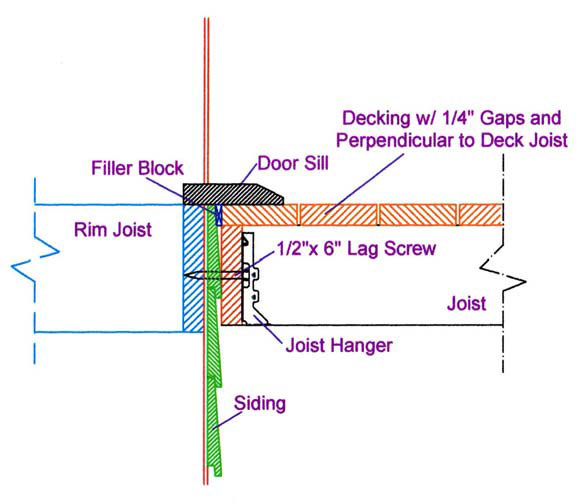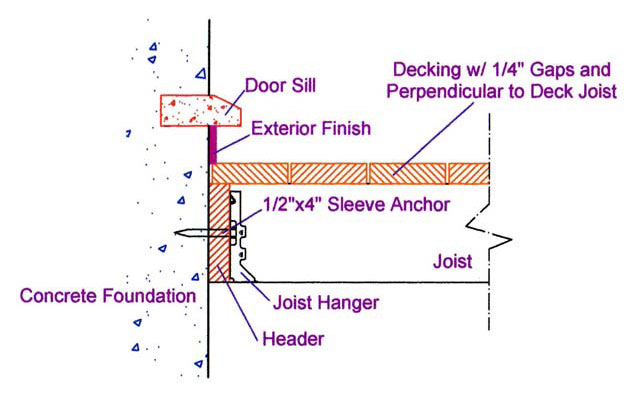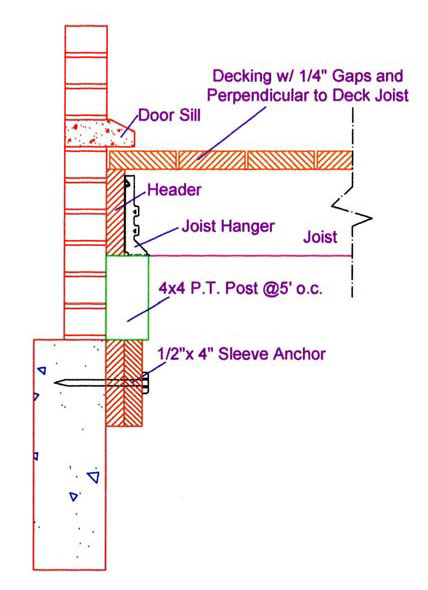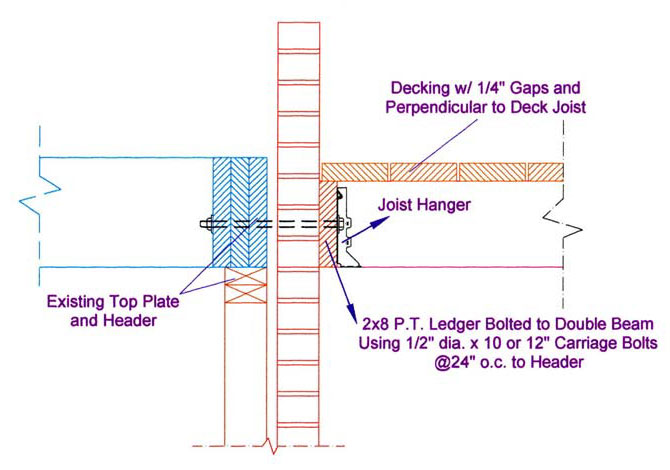How to Install a Deck Ledger Board, or Header
How to Install a Deck Ledger Board, or Header DIY Deck PlansA ledger board, or header, is a horizontal piece of lumber attached to a wall to support the ends of deck joists. The ledger can be attached using one of three methods.
- “Through bolts” are driven into brick or stone, then protrude through the ledger, where they are fastened with a nut.
- Lag bolts are driven through the ledger and the brick or siding and into the house’s frame.
- Tapcon style concrete screws can be used in place of through bolts in many cases.

Fasteners should be installed at staggered heights, to discourage the ledger from splitting, and should be spaced no more than 24” oc. Check your local code on fastener spacing.
- Mark anchor locations on your ledger and drill through the board with a ½” bit
- Position the ledger against the wall and mark the anchor positions through the hole onto the wall.
- Drill pilot holes for lead sleeve anchors into the brick and drive a through bolt anchor into each hole.
- Reposition the ledger so that the “through bolts” protrude through the ledger. Fasten in place with nuts and a socket wrench.
Installing Ledger to Concrete wall
A 2X8 ledger is fastened to the concrete foundation wall using ½”X4” sleeve anchors, or other concrete anchors. Anchors should be installed at staggered heights in between joists. Follow the instructions above, substituting the appropriate anchors.
Fastening Wall Ledger
Onto Brick Veneer
(Confirm with local building code)

To attach a ledger against a wall through brick veneer:
- Mark anchor locations on your ledger and drill through the board with a ½” bit
- Position the ledger against the wall and mark the anchor positions through the hole onto the wall.
- Drill through the brick veneer with a ½ inch masonry bit in a hammer drill, until you reach the wood frame behind. Do not drill into the wood.
- Reposition the ledger board and fit a ½” lag bolt, 10” long into each hole and drive them in slightly with a hammer.
- Use a socket wrench or impact driver to drive the bolts into the frame until the ledger is snug against the wall.
Onto Siding
(Confirm with local building code)

When fastening to siding follow the same steps as above. Tack a shim strip in place to hold the ledger board level.
Onto Solid Concrete
(Confirm with local building code.)

To fasten to solid concrete, follow the instructions for brick veneer and substitute a sleeve anchor, or other appropriate concrete anchor.
Onto Stone or Stucco
(Confirm with local building code.)

When fastening to uneven stone, or stucco, the ledger board must be supported from beneath with a ledger attached to the solid concrete foundation at the bottom of the wall.
- Drill two lengths of ledger board for anchors as described above and anchor them both to the solid concrete, stacked to provide a 3” wide ledge along the top edge.
- Cut pieces of PT 4x4 post to fit from the top of the double ledger support to the bottom of the deck ledger above.
High Decks into Unfinished Basements
(Confirm with local building code.)

To fasten a deck ledger to an exposed basement wall, use the same “through bolt” procedure as described for brick veneer above. If code permits, lead sleeve anchors, or Tapcon style concrete lags can also be driven into the exposed basement wall in place of the through bolts.